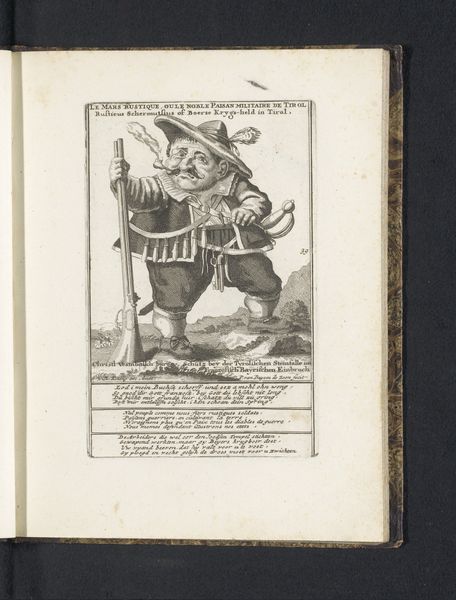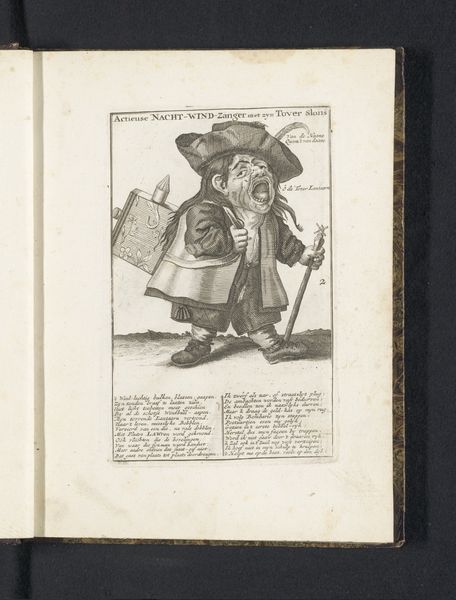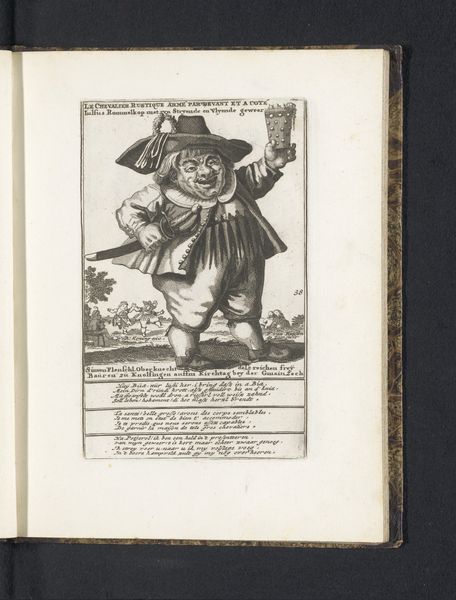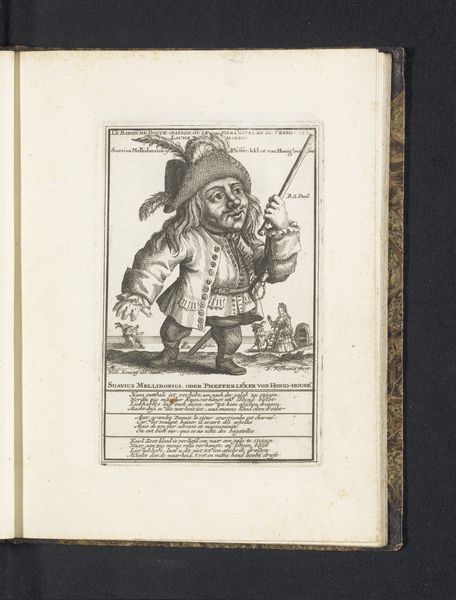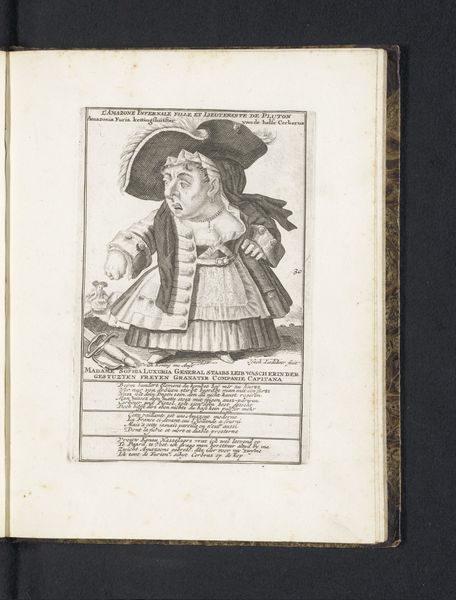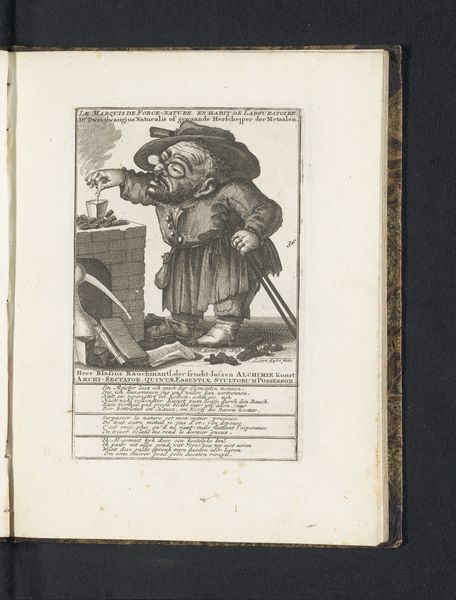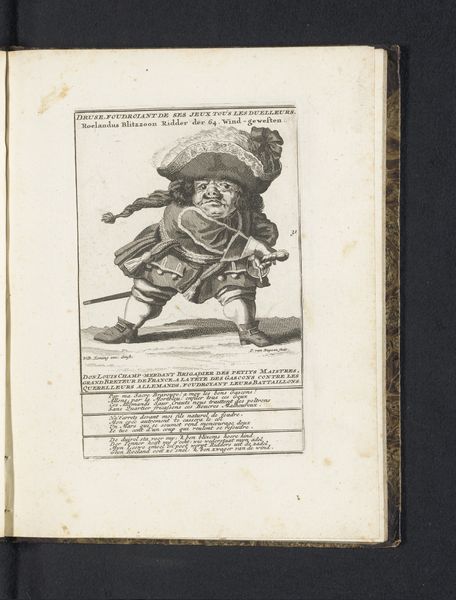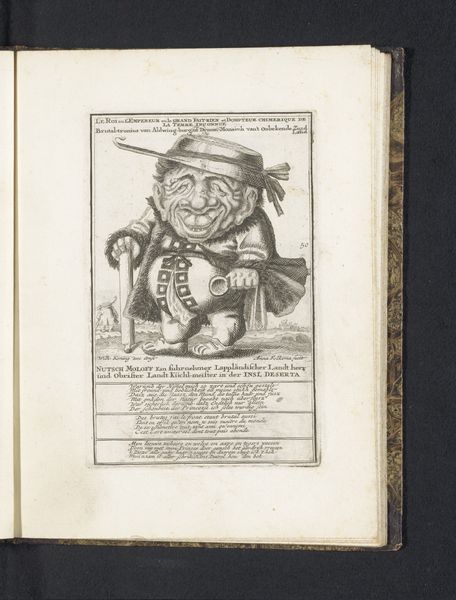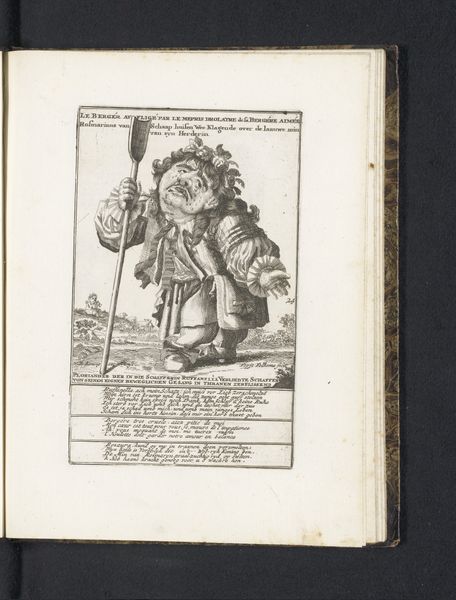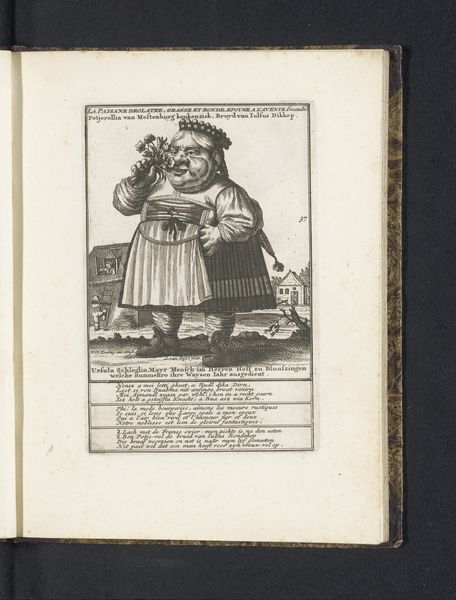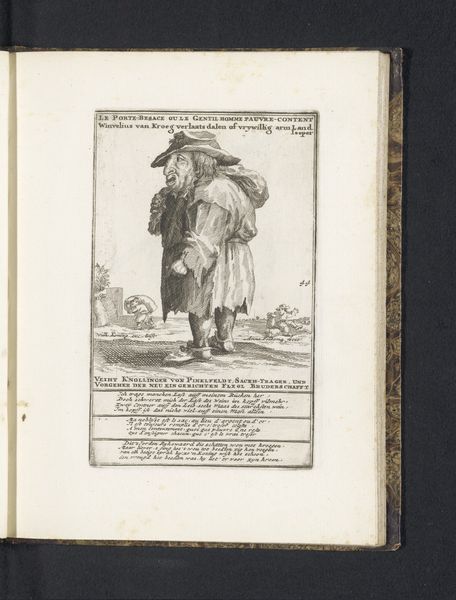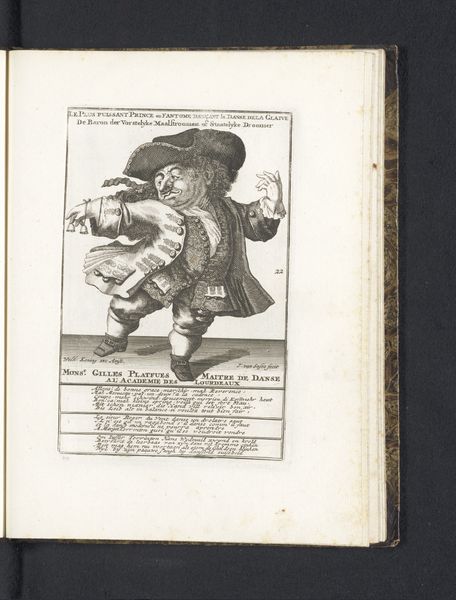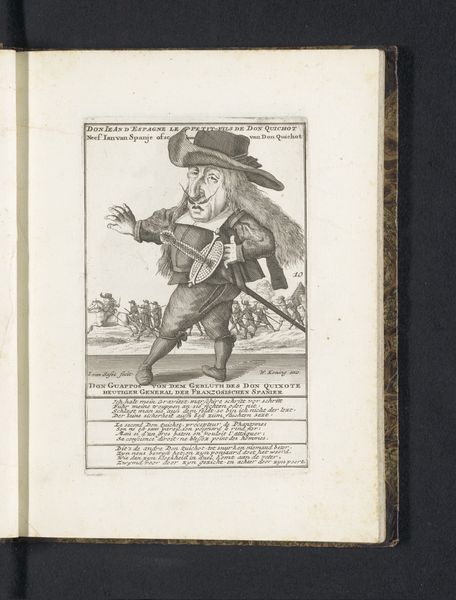
print, etching, engraving
#
portrait
#
baroque
# print
#
etching
#
genre-painting
#
history-painting
#
engraving
Dimensions: height 169 mm, width 105 mm, height 227 mm, width 170 mm
Copyright: Rijks Museum: Open Domain
In 1720, Anna Folkema created the engraving, "De dwerg Dulcinius Honigratus". The composition immediately draws attention through its use of scale and proportion. The dwarfish figure is centrally positioned, dominating the pictorial space with its disproportionately large head and diminutive body. This distortion serves to destabilize conventional notions of human representation, leaning into the grotesque. Folkema’s use of line is meticulous; fine, etched lines define the details of the figure's attire. Semiotically, the elaborate costume and accoutrements signify status and wealth. However, the dwarfed stature undermines these symbols of power. The linear precision contrasts with the subject's exaggerated features. Folkema challenges fixed social meanings by subverting visual cues of nobility. The artist engages with prevailing discourses around representation. The dwarfed figure acts as a signifier of difference, compelling viewers to reconsider societal norms and expectations.
Comments
No comments
Be the first to comment and join the conversation on the ultimate creative platform.
